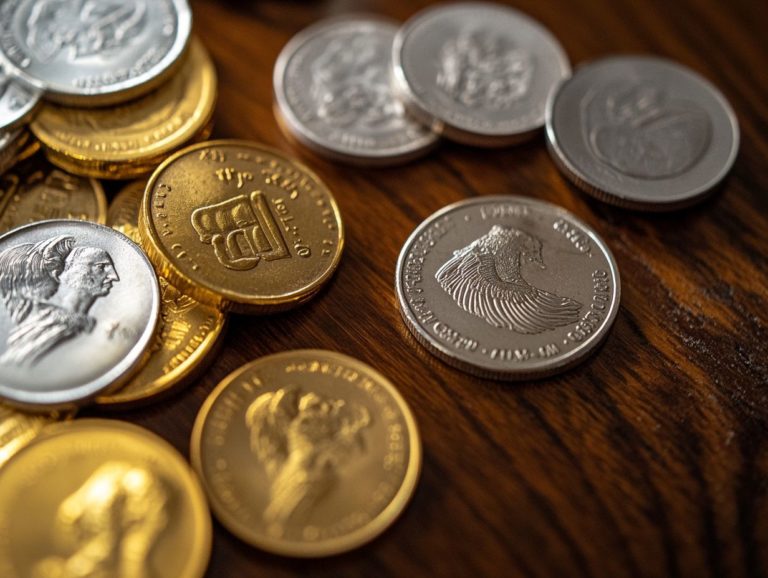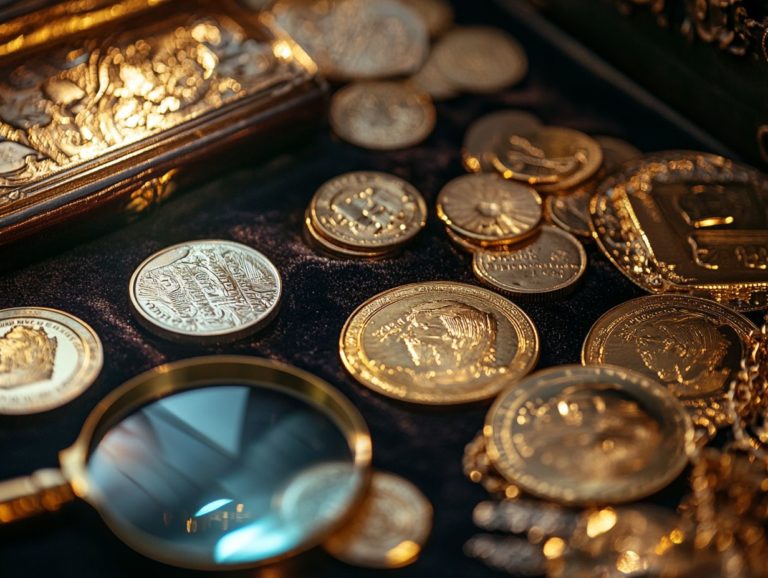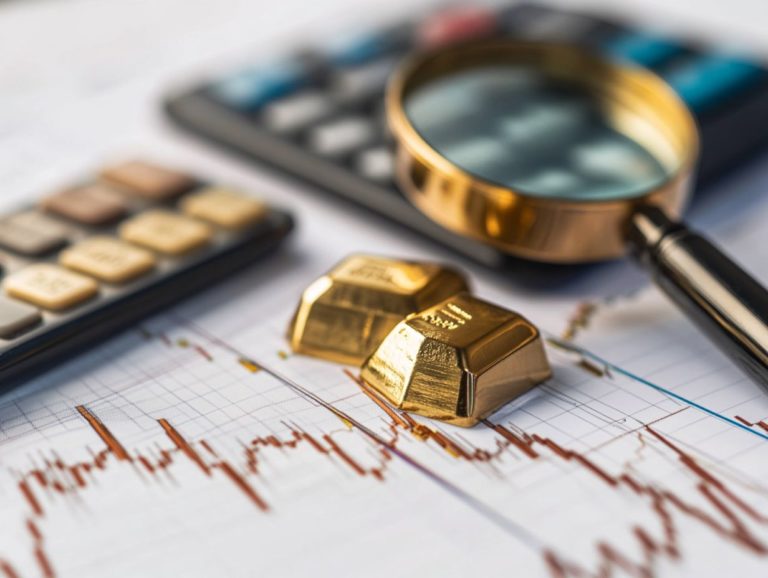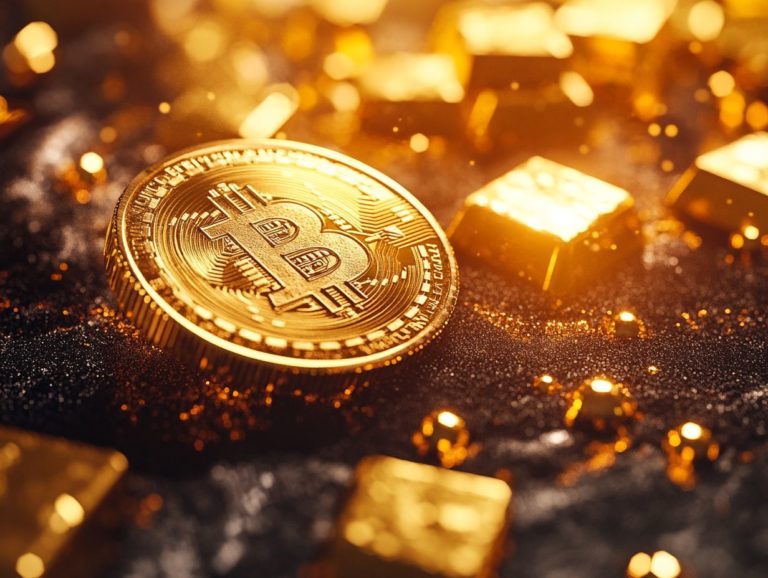The Basics of Investing in Silver Bullion
Investing in silver bullion has become increasingly attractive as you seek to diversify your portfolio and protect your wealth.
With its rich history and promising potential for growth, silver offers a compelling opportunity whether you’re a newcomer or a seasoned investor.
This article delves into what silver bullion is, the various types available, and the crucial factors you should consider before making an investment.
You ll also find practical tips on how to buy and store silver, along with strategies for navigating potential risks.
Whether your goal is to enhance your financial strategy or satisfy your curiosity about silver, this guide provides valuable insights to empower you in making informed decisions.
Contents
Key Takeaways:
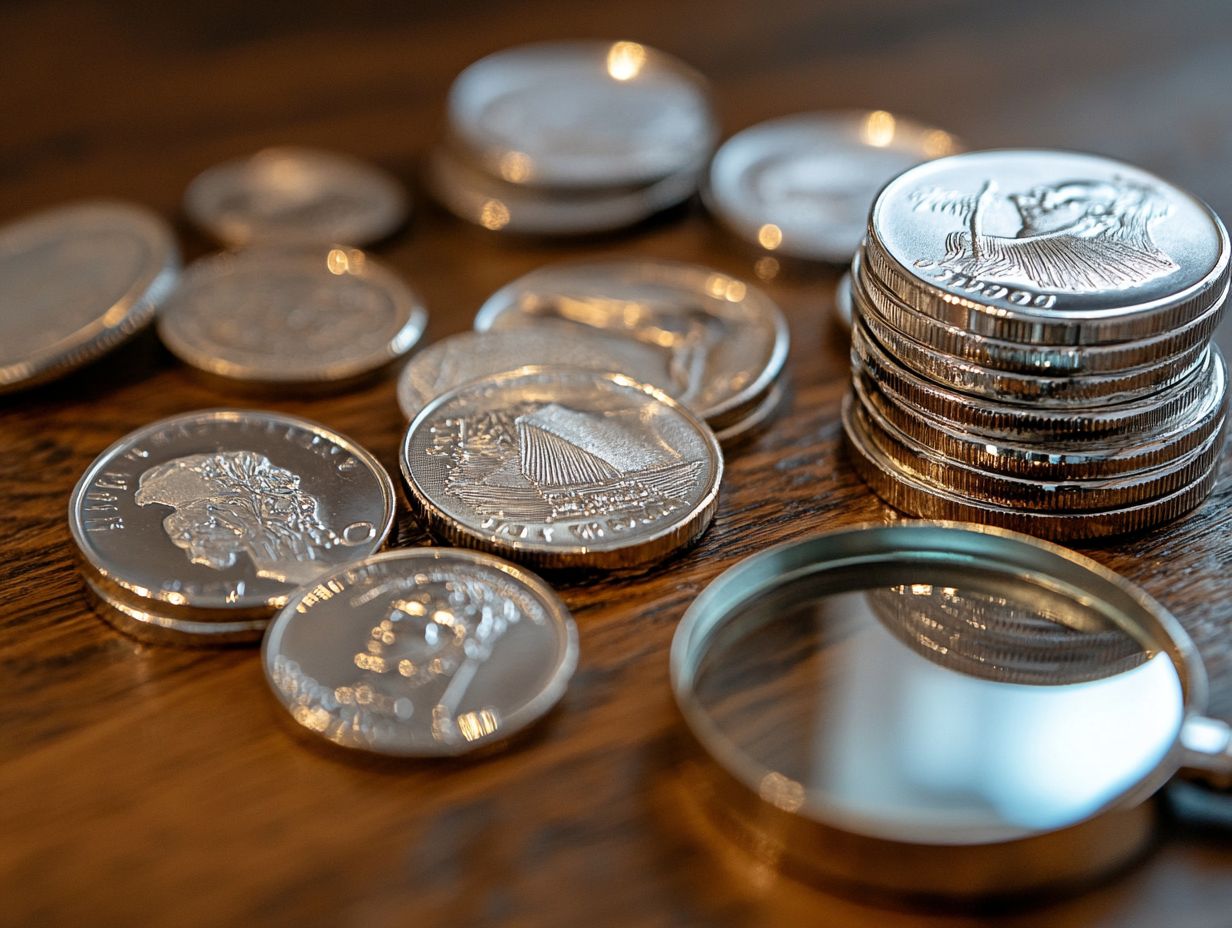
- Silver bullion is a solid investment with a history of growth and stability.
- Consider both physical and paper forms of silver, understanding their benefits and risks.
- Before investing, study market trends and set a plan for buying, storing, and protecting your investment.
What is Silver Bullion?
Silver bullion is one of the most trusted avenues for precious metal investing, providing you with a tangible asset in the form of sleek silver bars or coins.
As a liquid commodity, silver bullion acts as a way to protect your money from losing value due to rising prices and enhances your portfolio diversification.
This makes it particularly appealing for those looking to safeguard their wealth in today s unpredictable financial landscape.
Whether you choose elegant bars or collectible coins, these forms of silver offer a reliable investment path, allowing you to own physical property that carries intrinsic value.
In the grand scheme of investing, silver bullion plays a pivotal role, working well with other investments like stocks and bonds, which can often be vulnerable to market swings.
During times of economic uncertainty, many investors gravitate toward this precious metal, leveraging its demand in industrial applications and its reputation as a safe haven.
As global markets shift, understanding how silver fits into your diversified strategy can be essential for successfully navigating the complexities of financial terrains.
Reasons to Invest in Silver Bullion
Investing in silver bullion presents you with many compelling reasons.
Its historical performance as a safe haven is well-documented, reflecting its resilience during turbulent times.
As a tangible asset, silver serves as a robust safeguard against economic instability and inflation, allowing you to protect your capital.
It also helps diversify your investment portfolio, enhancing your strategy while potentially yielding impressive returns.
Historical Performance and Potential for Growth

The historical performance of silver showcases its remarkable resilience as an investment, often moving in tandem with market prices shaped by economic conditions and investor sentiment.
Throughout the decades, you ve likely noticed silver s potential for growth, especially during periods marked by market volatility and inflationary trends.
This precious metal serves as a dependable store of value, appealing to investors seeking safe-haven assets in uncertain times.
Various factors, such as industrial demand, geopolitical events, and currency fluctuations, significantly influence silver s trajectory in the market.
When you compare silver to other investments like gold and equities, you ll find that it often displays unique price movements, which can be beneficial for your diversification strategies.
As an investor, regularly assess these elements within the context of broader economic indicators, aiming to make informed decisions that optimize your portfolio and capitalize on silver s potential in a changing market landscape.
Types of Silver Bullion to Consider
When contemplating silver bullion, you have an array of options, including physical silver coins, bars, and exchange-traded funds (ETFs) that mirror the price of silver.
Each type of silver bullion presents its own unique advantages and serves distinct functions in an investment portfolio.
It s important for you to grasp these choices thoroughly to make informed decisions that align with your financial goals.
Are you ready to explore the world of silver investing? Take the next step and consider consulting an expert for personalized guidance.
Physical vs. Paper Silver
The choice between physical silver and paper silver, such as Exchange-Traded Funds (ETFs), is crucial for you as an investor. Each comes with unique characteristics that influence liquidity and storage requirements.
Physical silver gives you the satisfying tangibility of ownership. In contrast, paper silver streamlines transactions and storage but may introduce some counterparty risks. You often find yourself grappling with the decision of which form of silver aligns best with your financial goals.
Physical silver, typically in the form of coins or bars, serves as a hedge against market volatility and inflation. It offers a tangible asset that can be securely stored. However, the need for secure storage and concerns about theft or damage can pose significant drawbacks.
On the other hand, paper silver provides superior liquidity, allowing you to buy and sell with ease. This option frees you from the logistical hassles of physical storage. Your investment strategies may vary widely; if you prefer immediate access and lower costs, you might gravitate toward paper options.
Yet, some individuals find value and comfort in physically holding silver, appreciating the security it brings.
Factors to Consider Before Investing
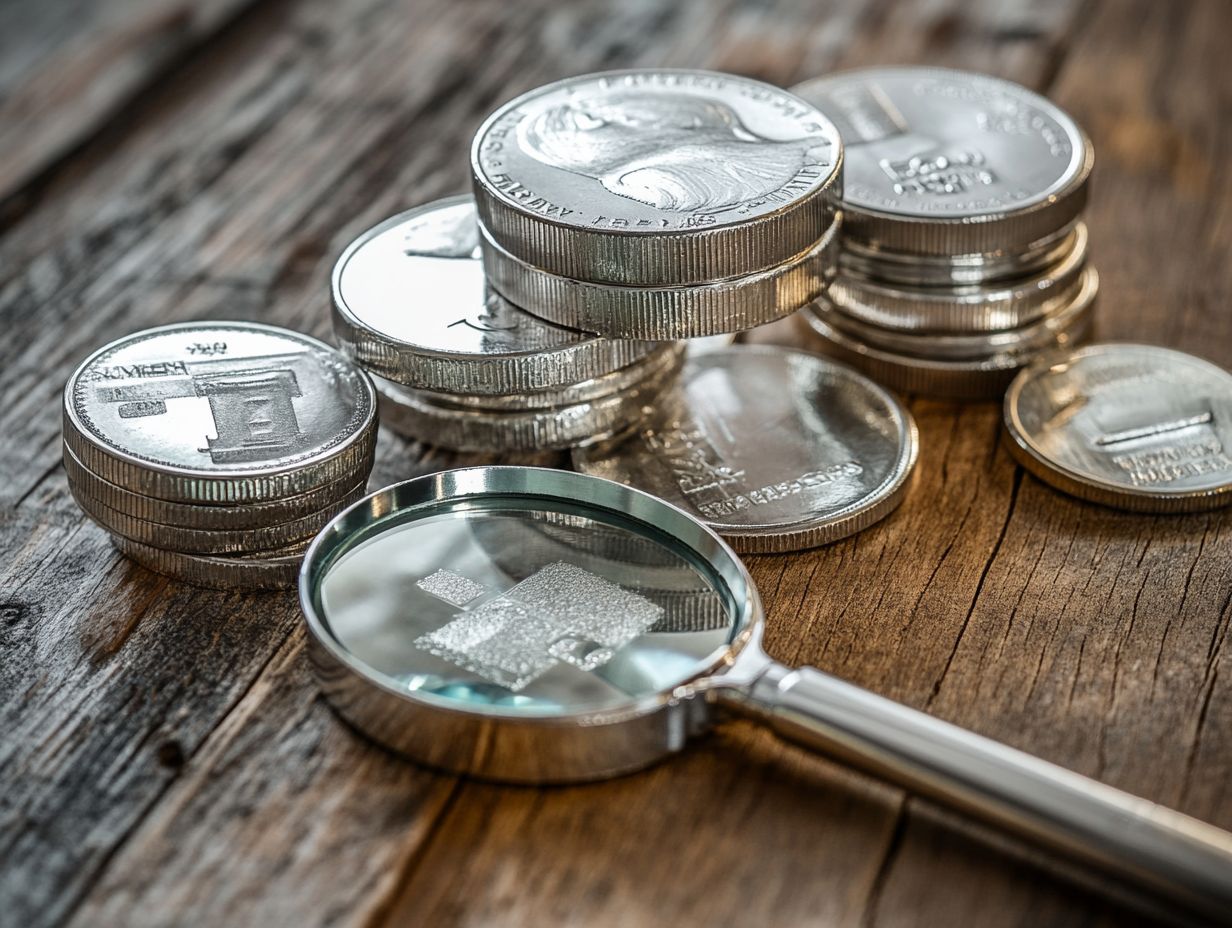
Before you invest in silver bullion, you need to weigh your options carefully to make the best investment choice. Consider current market trends, your personal financial goals, and the inherent risks that come with precious metal investments.
Understanding your risk tolerance and investment goals is crucial. This knowledge shapes your decision-making process and ensures your investments align with your financial aspirations.
Market Trends and Personal Goals
Analyzing current market trends is crucial for aligning your silver investment strategy with your personal financial goals. This ensures informed decisions regarding asset allocation and risk management. Factors like market volatility, economic indicators, and your own investment timelines significantly shape your approach to investing in silver bullion.
To effectively navigate the ever-changing landscape of the silver market, it s vital to stay updated on global economic shifts. These shifts dictate supply and demand dynamics. Adopting a proactive approach allows you to adjust your strategies whether that means diversifying your portfolio or timing your purchases to take advantage of price fluctuations.
Utilizing tools such as technical analysis and expert insights empowers you to anticipate market changes. Ultimately, being adaptable safeguards your investments and positions you for potential growth in an unpredictable economic environment.
How to Invest in Silver Bullion
Investing in silver bullion requires a thoughtful approach, starting with defining your investment strategy.
You need to select the right type of silver that aligns with your goals and familiarize yourself with the buying and storing processes.
By meticulously navigating these steps, you can seamlessly integrate silver into your portfolio and harness its potential as a valuable financial asset.
Buying and Storing Silver Bullion
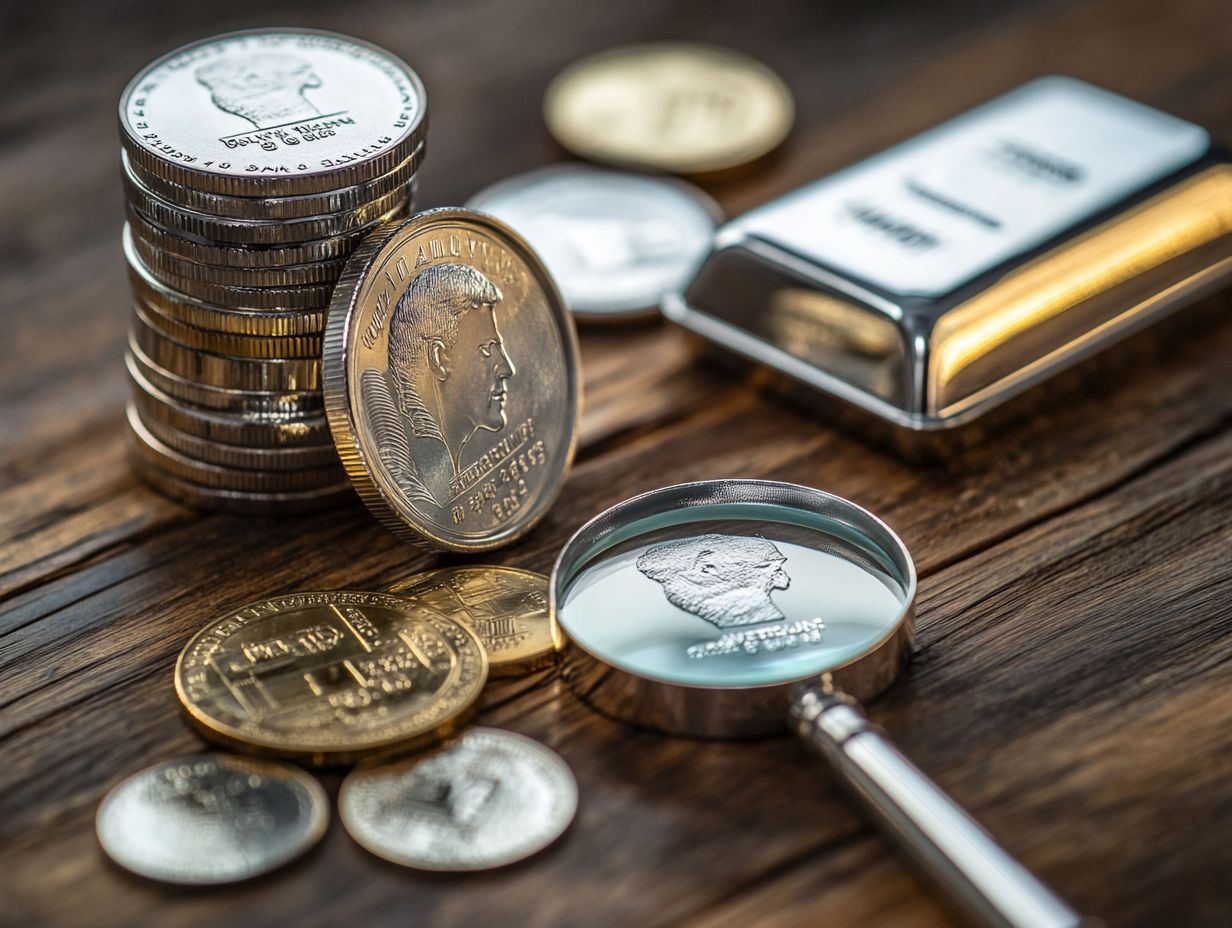
When buying and storing silver bullion, focus on key factors. Reputable dealers, secure storage options, and insurance are paramount for safeguarding your investments.
Grasping the logistics of purchasing silver and securing it properly is essential for protecting this valuable asset.
Selecting a trustworthy dealer guarantees the authenticity and quality of the bullion you acquire. After completing your purchase, your focus should shift to secure storage solutions be it a bank’s safe deposit box or a home safe designed for precious metals.
Both alternatives have their pros and cons, but prioritizing safety is non-negotiable. It s also wise to integrate an insurance policy to cover theft, loss, or damage, reducing risks and offering you peace of mind.
Investing in silver is not just about buying it’s about securing your financial future! Start your investment journey today!
Potential Risks and How to Mitigate Them
Investing in silver, much like any other investment, comes with its own set of inherent risks, including market volatility and price fluctuations that you must be ready to navigate. By using smart strategies to reduce risks, you can protect your investments while enhancing your potential returns over time.
Protecting Your Investment
Protecting your investment in silver calls for savvy strategies, such as diversifying your portfolio, seeking insurance, and staying attuned to market trends. Diversification, or spreading your investments across different assets like gold, stocks, or bonds, is a fundamental pillar of a sound investment strategy. This approach can help mitigate potential losses from volatility in the silver market.
Getting suitable insurance coverage for your physical silver holdings adds another vital layer of protection. This way, should theft or damage occur, you can minimize financial loss.
Keep an eye on market trends and global economic factors, as this gives you the power to make informed decisions and adjust your strategies in response to changing conditions.
Start diversifying your portfolio today to protect your silver investment! Investing in silver is a fantastic opportunity, but you need to be smart about it!
Frequently Asked Questions
Got questions? Here are some answers to help you understand silver bullion better!
What is silver bullion?
Silver bullion refers to physical silver, typically in the form of coins, bars, or rounds, that is held for investment purposes rather than for its industrial or collectible value. It is often seen as a way to diversify one’s investment portfolio and hedge against inflation.
How is silver bullion different from silver stocks?
While silver stocks are shares of companies that mine, produce, and sell silver, silver bullion is the actual physical metal. Investing in silver bullion means owning the metal directly, while investing in silver stocks means owning a stake in a company’s performance.
Why should I consider investing in silver bullion?
Investing in silver bullion can provide a hedge against inflation and economic uncertainty. It is also a tangible asset that can be held independently of the banking system, making it a potential store of value in times of financial instability.
What are the different forms of silver bullion?
Silver bullion is typically available in coin, bar, and round form. Coins, such as the American Silver Eagle or Canadian Silver Maple Leaf, are government-issued and have a legal tender value. Bars are usually produced by private mints and come in various sizes, while rounds are similar to coins but are not legal tender.
How do I buy and sell silver bullion?
You can purchase silver bullion from authorized bullion dealers, precious metals brokers, or even directly from the mint. It is important to do your research and only buy from reputable sources. When it comes time to sell, you can either sell back to the dealer or through an online marketplace.
What factors should I consider when investing in silver bullion?
When investing in silver bullion, you should consider the current market price, the purity of the metal, any additional premiums or fees, and the reputation of the dealer. It is also important to have a long-term investment strategy and not be swayed by short-term market fluctuations.
Explore your silver investment options today and secure your financial future!

